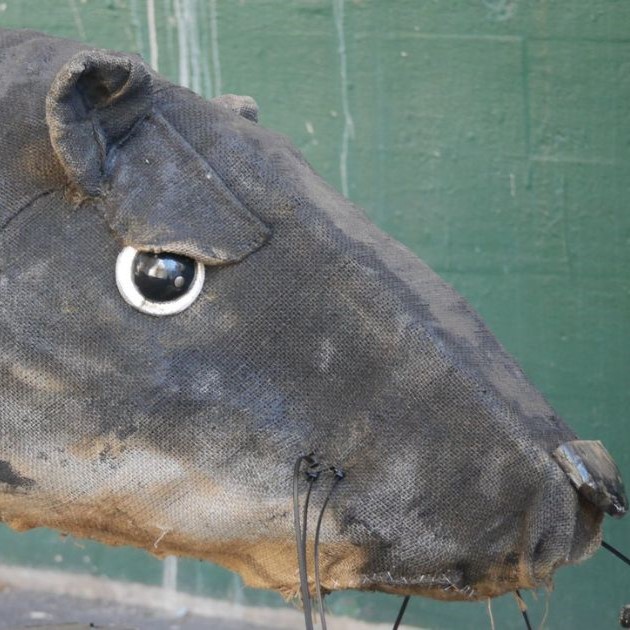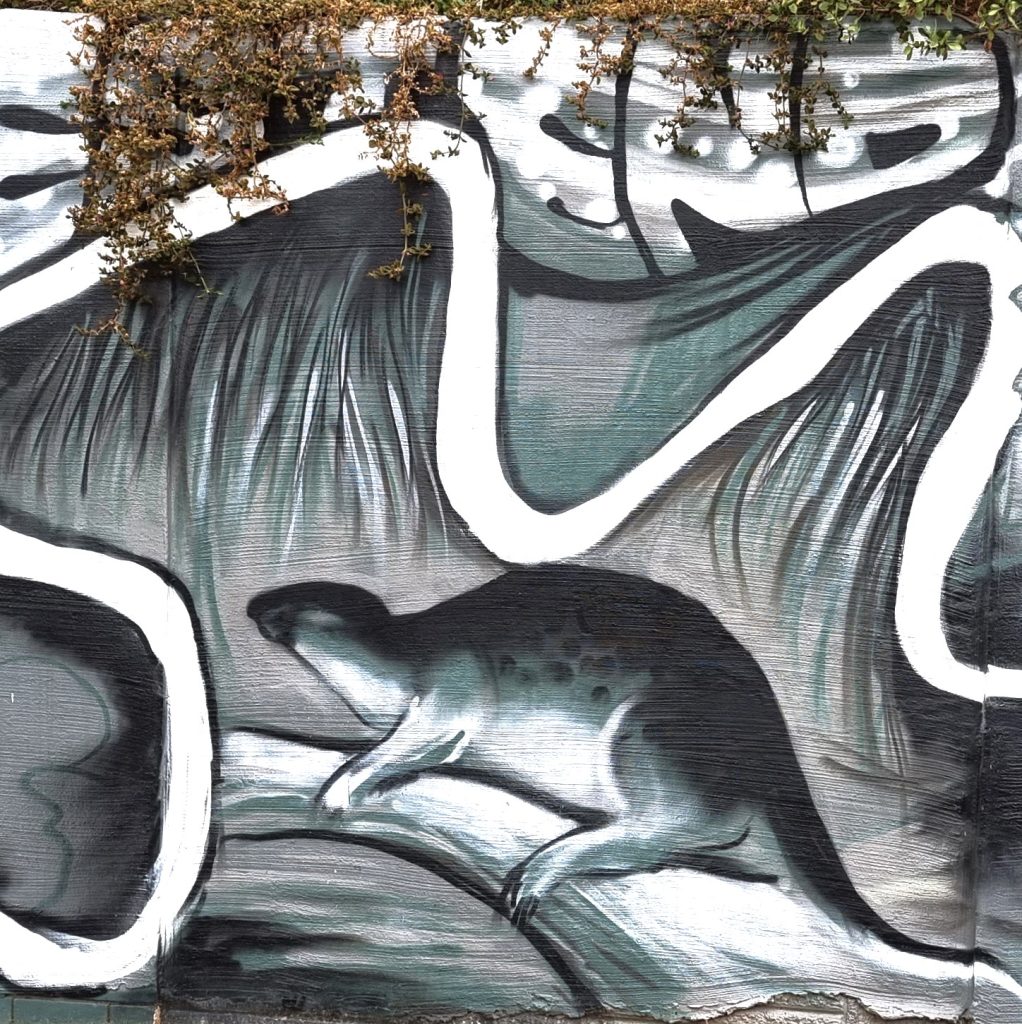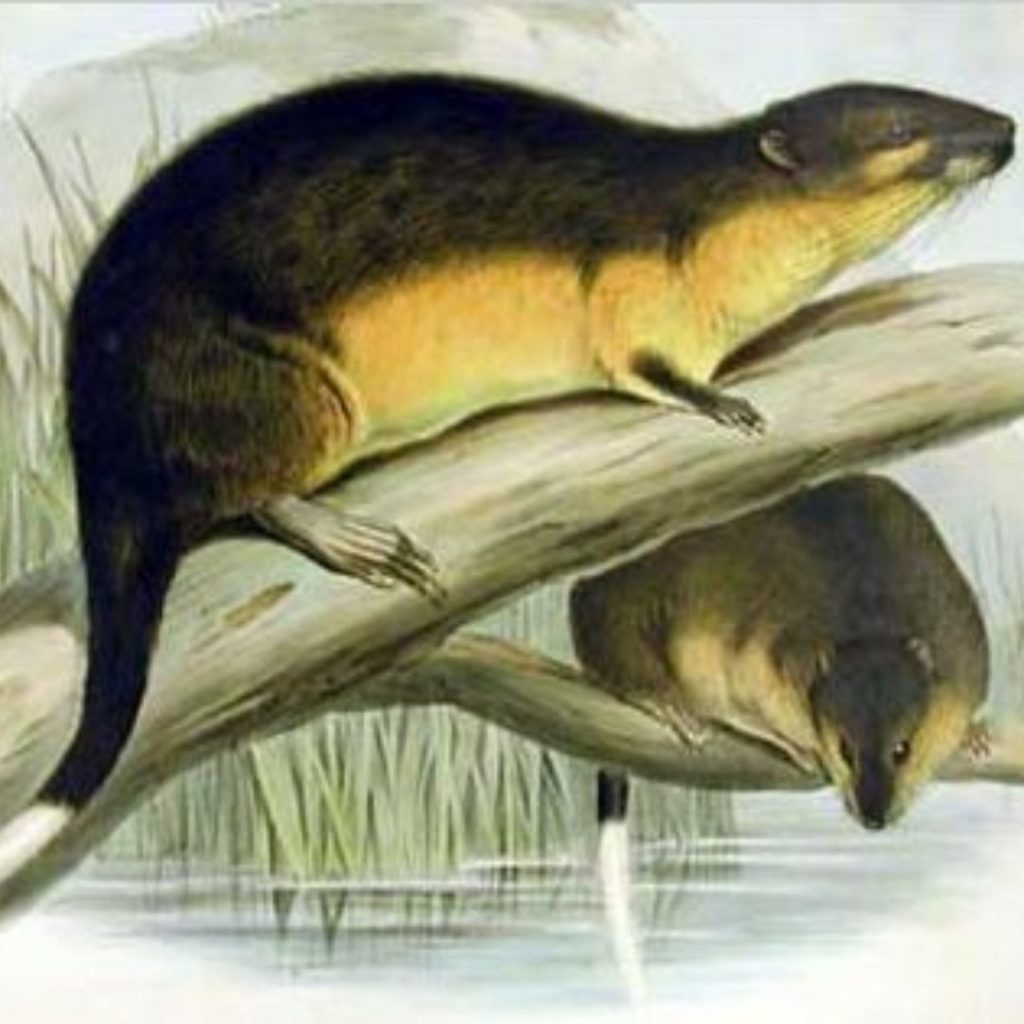In the local Turrbal language, Kurilpa means the place of the water rats[i], a name we are proud of in the 4101 suburbs. We name our local clubs and school teams Kurilpa, they are part of our street art, and a giant water rat participates in the annual Kurilpa Derby. But what do we know about these elusive creatures, and have you ever seen one?


Their scientific name is Hydromys chrysogaster[ii], but Dr Alisha Steward, a freshwater scientist with the Queensland State Government, says the widely accepted name for the water rat across Australia is Rakali. And while they are a rodent, she thinks ‘rat’ is not the best name for them as they are nothing like the invasive feral rats we can get in our yards and homes.
“They are equivalent to an otter I suppose, in the way they behave and how they fit into the ecosystem. The Rakali is a predator, eating aquatic insects, fish and crustaceans.”
The Rakali or Kuril is larger than a house rat and is distinguished by its webbed feet and the white tip on its tail.
They are widespread in Australia, living near permanent fresh or brackish water, including freshwater lakes, streams, swamps, dams, and urban rivers. “It is one of only several Australian mammals living in freshwater (platypus and water mouse Xeromys myoides)”. [iii] They are also found in New Guinea.
Rakali were once hunted for their fur but, like all native animals, are now protected. But they can be hard to spot, especially in our disturbed urban rivers.

“I’ve sampled water throughout Queensland and I have never seen one in all the work I’ve done,” Alisha said. “I have seen them in my local urban waterway though.”
Why don’t we see them?
The Rakali are not considered endangered but are less likely to be seen in the built-up urban areas of Brisbane.
There can be many reasons why we rarely see water rats around the river in West End. First, people don’t know what they are looking for and mistake them for feral rats. Another reason could be that there just aren’t many of them living in our heavily urbanised areas, as they are preyed on by foxes, dogs, and cats.
“There’s a lot of urban pythons. I imagine they would quite fancy eating water rats. So probably it is a mix of a few native predators, but certainly there’d be more pressure from pets and foxes,” Alisha said.
Loss of habitat goes to the health of the whole ecosystem, Alisha says.
“The riparian zone along a creek has different plants and trees that grow along its edge, providing habitat for animals and also food. So even while the Rakali is not a tree climber, the tree might have fruit and leaves that provides food to the ecosystem; leaves and fruit falling into the creek and feeding the crustaceans and insects that the Rakali then eat.”
Alisha says Rakali make nests in banks of creeks.
“So there has to be suitable habitat for them to do that. It leaves them more susceptible to predators if the river bank is completely open.
The only local I have spoken with who has seen a Rakali in recent years, lives along one of the gullies in Highgate Hill.


How can we protect them?
Alisha says if we want our Rakali to survive, we need to increase connected green space or green space corridors, and keep our waterways clean. [iv]
“I think it has to just be a balance of human uses versus the environment. So, if there were more plantings along the creeks and rivers; even some woody debris left in the creek can provide good habitat for aquatic biota.”
Alisha says we should also consider what we allow to flow into our stormwater drains to keep our waterways healthy.
We could plant more native species, create suitable habitats along the river banks, and avoid or reduce our use of fertilisers, weedicides, and pesticides in our gardens. We should also keep our dogs on the lead in parks and cats indoors.
Conserving Rakali could have unexpected benefits.
In the video below, Peter Banks from the University of Sydney, talks about his work investigating whether the large rodents could be used to help control pest-rats.
‘Theory tells us that wherever you’ve got an intact biodiversity, it’s going to be robust to invasive species. So if we can make and understand what makes for a robust native fauna, I think we can understand how we can control these [pest] rats.’
Report sightings
You can report sightings of water rats (including details of when and where the animal was seen) to the Australian Platypus Conservancy using this Reporting Form.
The information will be added to a secure database and eventually shared with the Atlas of Living Australia, in that way we can contribute valuable information to better understand where these animals occur and how well they’re doing in the wild. https://platypus.asn.au/2022/10/18/rakali-monitroing-data-sheet-wendouree/
Professor Peter Banks from the University of Sydney talks with ABC Radio National about the water rat.
REFERENCES
[i] In Turrbal, Water rat, “kuril’, place, “pa”. Aboriginal Places of Inner Brisbane https://adp.uq.edu.au/files/13189/Aboriginal-Places-of-Inner-Brisbane-2022.pdf
[ii] “golden-bellied water mouse” Australian Platypus Conservancy, https://platypus.asn.au/rakali/
[iii] Water rat, University of Queensland, https://www.qld.gov.au/environment/plants-animals/animals/discovering-wildlife/water-rat
[iv] See Brisbane City Council’s guide to Water Sensitive Urban design, for example, https://www.brisbane.qld.gov.au/planning-and-building/planning-guidelines-and-tools/historic-and-superseded-brisbane-city-plan-2000/superseded-subdivision-and-development-guidelines/water-sensitive-urban-design
Cover image by Jonathan Marshall.


It’s all quite confusing Jan. A Wikipedia article on the Fawn-footed mosaic-tailed rat ((Melomys cervinipes) quotes an Australian Nature Conservation Agency publication from 1995 that looked at indigineous names of animals . It said that this animal’s name in the Moreton Region is Corril or Korril which I would think is another version of Kuril as there was no standard orthography .
Interesting – are you suggesting the Kuril is different animal Paul – the tree-dwelling rodent, Melomys cervinipes? There is certainly a long tradition locally identifying the water rat as the Kuril.